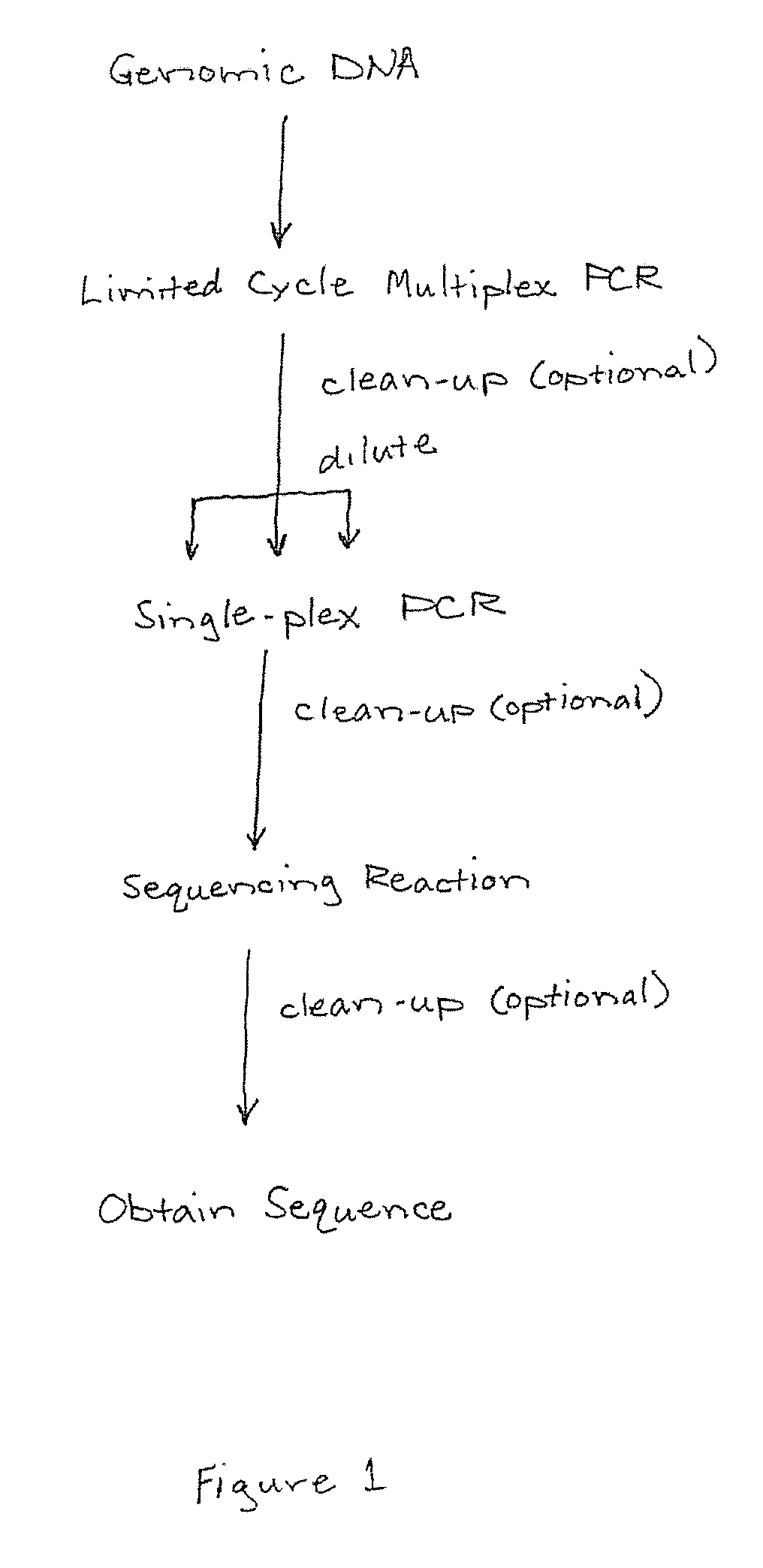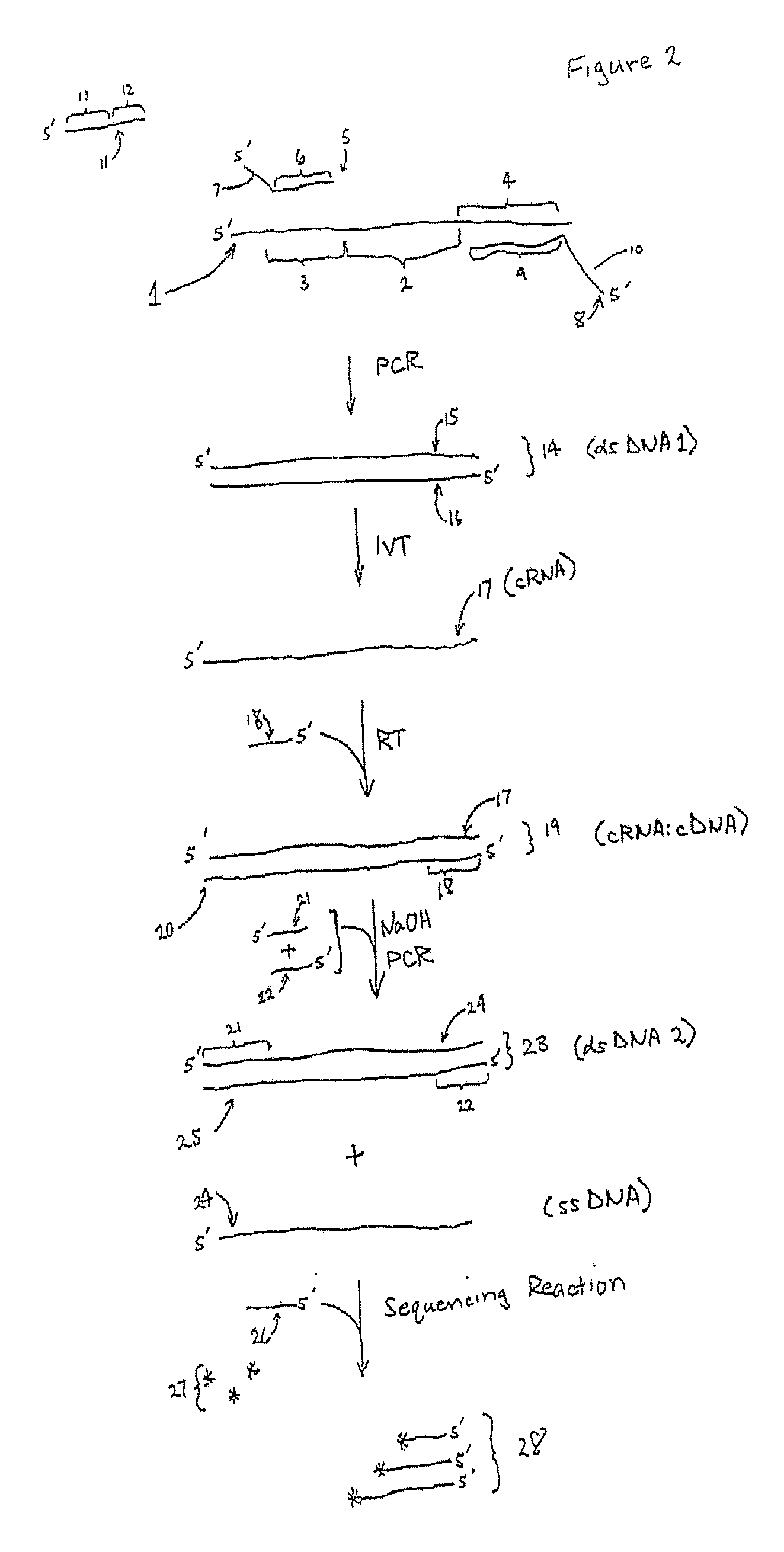Genomic DNA sequencing methods and kits
a technology of dna sequencing and kits, applied in the field of biotechnology and molecular biology, can solve the problems of limited ability to reliably evaluate samples containing only small amounts of gdna, and difficulty in detecting nucleic acids that may be present in such samples
- Summary
- Abstract
- Description
- Claims
- Application Information
AI Technical Summary
Benefits of technology
Problems solved by technology
Method used
Image
Examples
example 1
gDNA Amplification and Sequencing Method Comprising Two Amplification Reactions
[0128] This exemplary method combines (a) a multiplex PCR pre-amplification reaction comprising a mix of 24 target-specific primer sets and a small amount of human gDNA, (b) a multiplicity of different single-plex PCR reactions, and (c) a cycle sequencing reaction to amplify and resequence twenty-four target regions in each of four human gDNA samples.
[0129] Step 1: Multiplex PCR Pre-Amplification Reaction (First Amplification Reaction).
[0130] Twenty-four different resequencing amplicons (RSAs)(i.e., illustrative gDNA target regions), shown in Table 1, from four different human gDNA samples (Coriell Cell Repositories, Camden N.J., Repository #NA00893, NA10924, NA14529, and NA14672) were amplified using 24 corresponding target-specific primer sets, also shown in Table 1, in a limited cycle multiplex PCR (“pre-amplification”). All steps were performed on ice when possible, unless otherwise noted. Four par...
example 2
gDNA Isothermal Amplification and Sequencing Method Comprising Four Amplification Reactions
[0139] The same 24 illustrative target regions were amplified and resequenced using the same 4 gDNA samples as described in Example 1 according to the following exemplary method comprising four amplification reactions. All work was performed on ice when possible, unless otherwise noted.
[0140] Step 1: PCR (First Amplification Reaction).
[0141] Two sets of 24 different target-specific primer pairs were synthesized. One set of target-specific primer pairs comprised a forward target-specific primer and a reverse target-specific primer, each comprising (a) a target-binding portion comprising target flanking region-specific sequences, i.e., the same sequence as the first target flanking sequence of the gDNA target region or a sequence that is complementary with the second target flanking sequence of the gDNA target region, located at the 3′-end of the primer, and (b) a tail comprising a primer-bin...
PUM
| Property | Measurement | Unit |
|---|---|---|
| Tm | aaaaa | aaaaa |
| Δ Tm | aaaaa | aaaaa |
| melting temperature | aaaaa | aaaaa |
Abstract
Description
Claims
Application Information
 Login to View More
Login to View More - R&D
- Intellectual Property
- Life Sciences
- Materials
- Tech Scout
- Unparalleled Data Quality
- Higher Quality Content
- 60% Fewer Hallucinations
Browse by: Latest US Patents, China's latest patents, Technical Efficacy Thesaurus, Application Domain, Technology Topic, Popular Technical Reports.
© 2025 PatSnap. All rights reserved.Legal|Privacy policy|Modern Slavery Act Transparency Statement|Sitemap|About US| Contact US: help@patsnap.com


